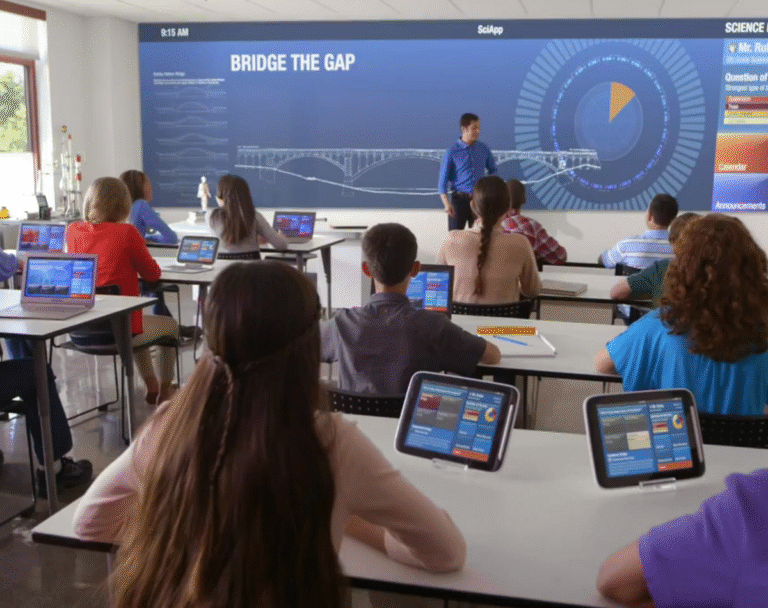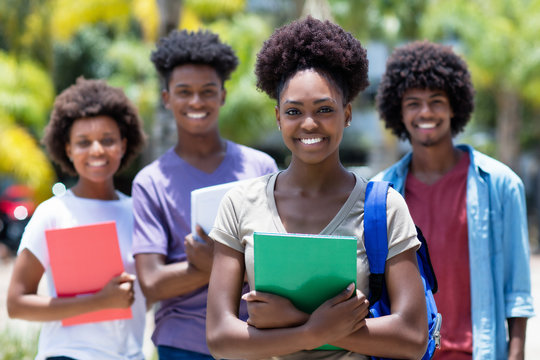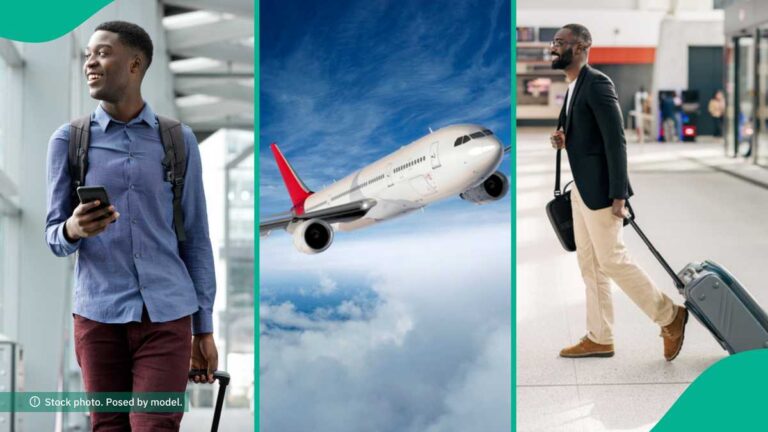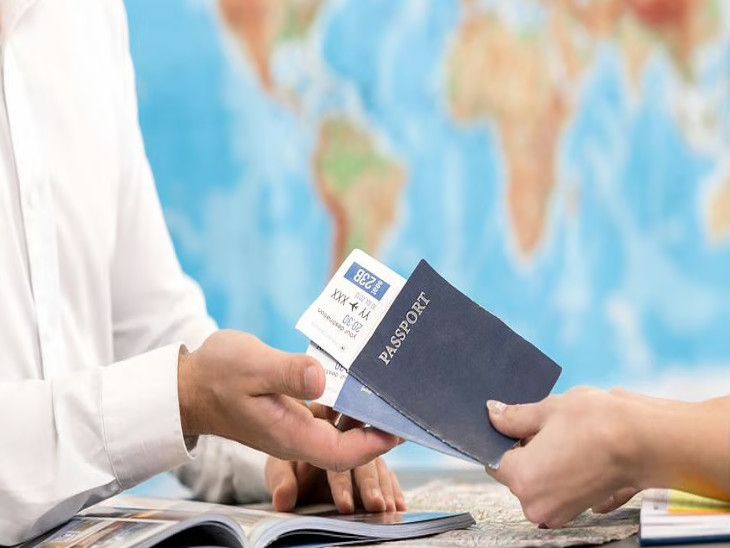Unlock fully funded pathways to study AI, Data Science, and Tech abroad — even if you’re from Nigeria or another developing country.

Introduction: Why Smart Students Should Care About AI & Tech Scholarships
You’re ambitious. You want top-notch education in AI, machine learning, data science, or computer science — but tuition fees, living costs, and visa expenses make studying abroad seem out of reach.
Good news: You don’t always have to pay. Global universities, governments, and tech-industry sponsors are offering fully funded scholarships aimed at international students. These scholarships can cover tuition, living expenses, travel, sometimes even stipend and research funding.
If you plan carefully, build a strong application and choose your target programs wisely, you can reduce or eliminate your financial burden — while giving your career a powerful boost.
In this blog post, I walk you through the top AI & tech scholarships in 2025, how to qualify, which ones fit your background (especially if you’re from a developing country), and actionable steps you can take now.
I also answer the most common questions students ask about scholarships, eligibility and success strategies.
Ready? Let’s go.
🔎 What Makes a “High-Value” Scholarship in 2025
Before diving into the list, here’s what you should look out for when evaluating a scholarship:
- Full tuition waiver (so you don’t pay university fees)
- Living stipend / monthly allowance (to cover housing, food, transport)
- Coverage of travel / visa / insurance costs, if possible
- Study fields relevant to AI / Machine Learning / Data Science / Robotics / Computer Science
- Open to international students (especially from developing countries)
- Strong university or institution backing (prestigious universities, governmental bodies, or global tech-industry sponsors)
If a scholarship ticks most of the above, it can truly change your life.
🌍 Top AI & Tech Scholarships for 2025
Here’s a curated list of some of the most valuable scholarships for international students who want to study AI, Data Science or related tech fields in 2025. I grouped them by region/type to help you navigate.
| Scholarship / Program | Region / Host Country | What’s Covered / Benefits | Who Should Apply / Notes |
|---|---|---|---|
| DAAD Scholarships | Germany & other German universities | Full/partial tuition + monthly stipend (≈ €934–€1,300) + travel & health insurance (AI Tools Guide) | International students (esp. from developing countries) applying for Master’s or PhD in AI, Computer Science, Data Engineering |
| ETH Zurich Excellence Scholarship & Opportunity Programme | Switzerland (Europe) | Full tuition waiver + living expenses (CHF stipend) (Euro Infopedia) | Outstanding international students aiming for AI, Data Science, Robotics, or related advanced studies |
| Erasmus Mundus Joint Master’s Scholarships | Multiple Europe countries | Tuition + living allowance + travel & insurance + sometimes dual/triple degree across universities (Makeoverarena) | International students targeting Master’s in Computer Science, AI, Data Science or related fields across Europe |
| University of Exeter Nigeria Postgraduate Taught Scholarships | United Kingdom (for Nigerian applicants) | £4,000 scholarship toward eligible postgraduate programmes (including Data Science-related courses) (University of Exeter) | Nigerian students (or eligible Nigerian passport holders) admitted to eligible master’s courses beginning Jan 2025 |
| Generation Google Scholarship (2025–26) – for CS students | Global / Europe-Middle East-Africa (EMEA) | Monetary award (e.g. EUR 7,000), sometimes with mentorship or access to resources (ScholarshipAir) | Computer science undergraduates (especially women or underrepresented groups) from eligible countries applying to CS degrees |
| Regional / Government-Funded Grants for Developing Countries (via DAAD, MEXT, etc.) | Germany, Japan, etc. | Tuition waiver, stipend, travel/insurance, housing allowances depending on scheme (AI Tools Guide) | Students from developing countries seeking MSc or PhD in AI/CS/Engineering abroad |
Highlights & What Makes These Scholarships Attractive
- Germany via DAAD: No tuition fees in many universities + generous monthly stipend; great for students from developing countries seeking quality AI/CS degrees.
- Switzerland via ETH Zurich: High prestige + full funding — top option if you score academically brilliant.
- Erasmus Mundus: Flexibility to study across multiple European universities, exposure to diverse research cultures + fully funded — ideal for students seeking broad international exposure.
- UK–specific (Exeter Nigeria scholarship): Particularly useful if you hold a Nigerian passport — helps bypass financial barriers for UK master’s programmes.
- Corporate / Industry-backed (e.g. Google Scholarship): Good especially if you’re already in undergraduate studies and need support to push into tech careers, AI/ML tracks.
- Government-funded schemes for developing countries: Often prefer applicants from Global South — making them accessible if you come from Nigeria or similar contexts.
💡 How to Maximise Your Chances of Getting a Scholarship
Getting a scholarship isn’t random — you can influence your success. Here’s how:
- Aim for a high GPA / excellent grades: Top scholarships (like ETH, DAAD) are highly competitive.
- Prepare a strong motivation letter / statement of purpose — explain why you want to study AI/CS and how it connects to your background or future ambition.
- Showcase relevant skills or experience: Projects in programming, data analysis, AI, research — even personal or open-source projects help.
- Apply early and meet deadlines strictly — many deadlines cluster in the last quarter of the year for following academic year.
- Include proof of English proficiency (IELTS/TOEFL) if required — many European and UK programmes expect this.
- Diversify applications — apply to 3–5 scholarships/universities to increase odds.
- Check eligibility carefully — some scholarships favour nationals from developing countries; some are region-specific (e.g. Nigeria for Exeter scholarship).
🎯 Which Scholarship Fits You (Based on Your Background)
- You live in Nigeria (or another African country) and want a master’s in AI/Data Science → DAAD, Erasmus Mundus, UK-specific scholarships (like Exeter), and global scholarships (like Google) are good fits.
- You have outstanding grades and want top-tier European education → Aim for ETH Zurich Excellence, Erasmus Mundus, or other fully funded elite programmes.
- You’re an undergrad or just finished bachelor’s in CS, looking for a boost into AI/ML → Corporate / tech-industry scholarships (e.g. Generation Google) or grants via global training platforms.
- You want flexibility and exposure to multiple European universities → Erasmus Mundus is a standout.
- You prefer lower cost-of-living and tuition-free universities plus stipend → Germany via DAAD is very attractive.
🚀 Step-by-Step Action Plan: How You Should Apply Now
- List all scholarships you’re eligible for — including deadlines, language requirements, application materials.
- Gather required documents — transcripts, CV, motivation letter, recommendation letters, English test scores, passport/ID, prior project/portfolio if any.
- Write a compelling motivation letter — mention your background, why AI/CS matters to you, what you plan to achieve after graduation.
- Apply to multiple programmes — don’t put all hopes on one; spread across 3–5 scholarships/universities.
- Track deadlines carefully — create a spreadsheet to avoid missing any due dates.
- Prepare for interviews (if required) — some scholarships may interview you, so be ready to explain your motivations, ambitions, technical interests.
- Follow up and keep alternatives ready — while waiting for results, apply to backup scholarships or less competitive programmes to avoid putting all eggs in one basket.
❓ Frequently Asked Questions (FAQ)
Q: Are these scholarships only for Masters/PhD, or can undergraduates apply?
A: Many target Masters/PhD (especially AI/CS-focused ones like DAAD, ETH, Erasmus Mundus), but there are also undergraduate-level scholarships — for example, corporate-sponsored scholarships like the Generation Google Scholarship. (Lerasign.com)
Q: If I’m from Nigeria (or Africa), does that reduce my chances?
A: Not necessarily. Some programmes (especially DAAD, Erasmus Mundus, global scholarships) actively encourage applications from developing countries. Being from Africa can even be an advantage under certain “global diversity” criteria.
Q: Do I need prior AI or programming experience?
A: While not all require it, having a background in computer science, mathematics, or programming strengthens your application — especially for competitive programmes. But even if you don’t, you can emphasize motivation, interest, and plans for growth.
Q: What if I get admitted but don’t get full funding? Are partial scholarships worth it?
A: Yes — partial funding can significantly reduce costs, and if you combine with part-time work, loans or local sponsorship, it’s often manageable.
Q: When should I start applying for 2025/2026 intakes?
A: Many deadlines for European scholarships fall between October to December, so it’s wise to start preparing 6–9 months in advance.
✅ Conclusion: Your Future in AI & Tech Is Unlocked — If You Act
If you’re serious about studying AI, Data Science, or Computer Science abroad but worry about finances — there are actionable, real opportunities waiting for you in 2025.
With scholarships like DAAD, ETH Zurich Excellence, Erasmus Mundus, UK-based options for Nigerian students, and global tech-industry awards, you can level the playing field and get world-class education without huge financial burden.
But it won’t happen by chance. You need to strategize — choose the right programmes, prepare strong applications, and apply to several to increase your odds.
Start now. Build your plan. And you might soon be studying at a top tech university, learning cutting-edge AI skills, and opening doors to global career opportunities you dreamed of.
Good luck — your future starts today.









 anger. They don’t just pay tuition—they often cover living expenses, travel, and more, giving you the freedom to focus on learning and leadership, not debt.
anger. They don’t just pay tuition—they often cover living expenses, travel, and more, giving you the freedom to focus on learning and leadership, not debt.








